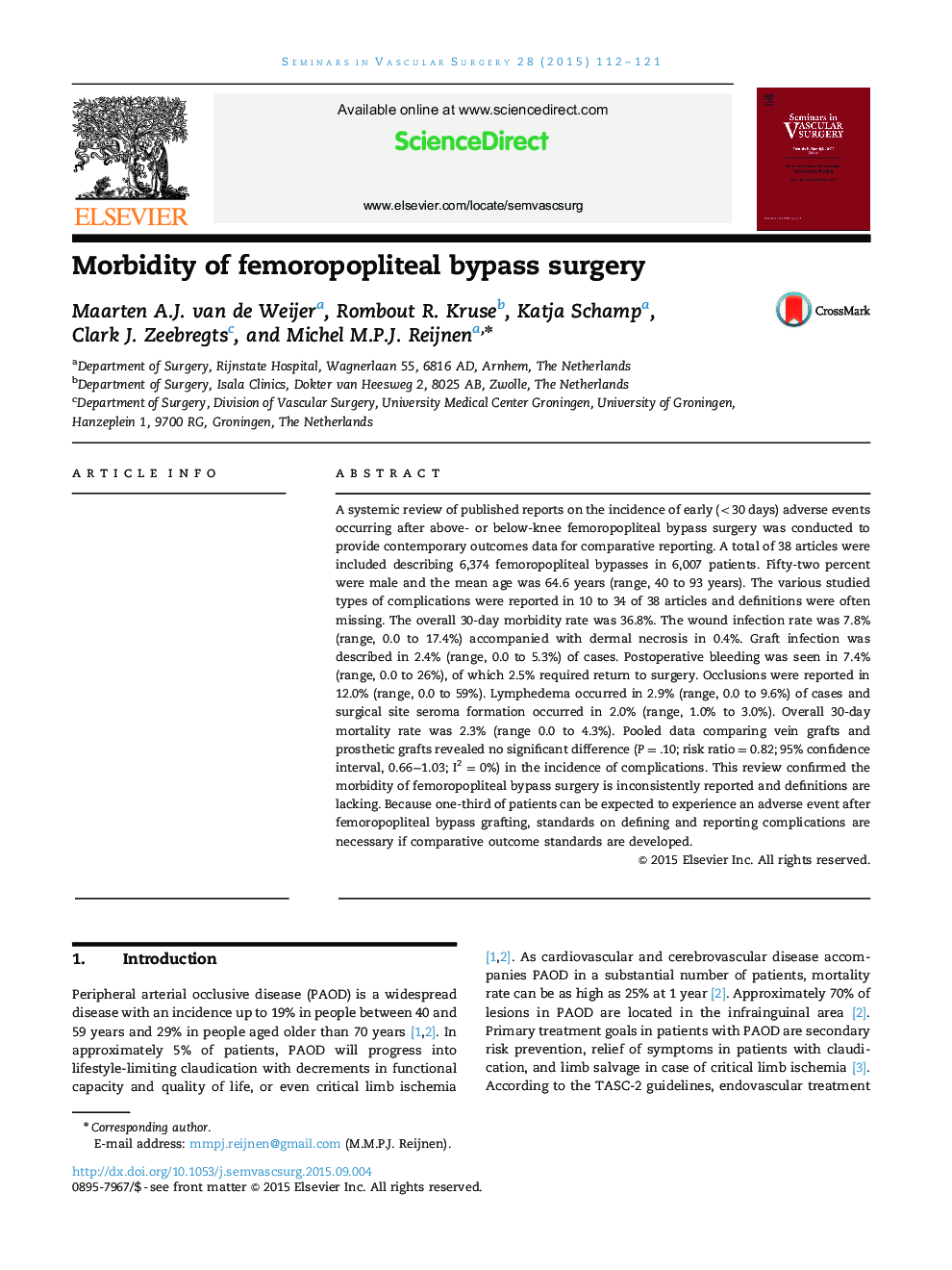| Article ID | Journal | Published Year | Pages | File Type |
|---|---|---|---|---|
| 3026099 | Seminars in Vascular Surgery | 2015 | 10 Pages |
A systemic review of published reports on the incidence of early (<30 days) adverse events occurring after above- or below-knee femoropopliteal bypass surgery was conducted to provide contemporary outcomes data for comparative reporting. A total of 38 articles were included describing 6,374 femoropopliteal bypasses in 6,007 patients. Fifty-two percent were male and the mean age was 64.6 years (range, 40 to 93 years). The various studied types of complications were reported in 10 to 34 of 38 articles and definitions were often missing. The overall 30-day morbidity rate was 36.8%. The wound infection rate was 7.8% (range, 0.0 to 17.4%) accompanied with dermal necrosis in 0.4%. Graft infection was described in 2.4% (range, 0.0 to 5.3%) of cases. Postoperative bleeding was seen in 7.4% (range, 0.0 to 26%), of which 2.5% required return to surgery. Occlusions were reported in 12.0% (range, 0.0 to 59%). Lymphedema occurred in 2.9% (range, 0.0 to 9.6%) of cases and surgical site seroma formation occurred in 2.0% (range, 1.0% to 3.0%). Overall 30-day mortality rate was 2.3% (range 0.0 to 4.3%). Pooled data comparing vein grafts and prosthetic grafts revealed no significant difference (P = .10; risk ratio = 0.82; 95% confidence interval, 0.66−1.03; I2 = 0%) in the incidence of complications. This review confirmed the morbidity of femoropopliteal bypass surgery is inconsistently reported and definitions are lacking. Because one-third of patients can be expected to experience an adverse event after femoropopliteal bypass grafting, standards on defining and reporting complications are necessary if comparative outcome standards are developed.
